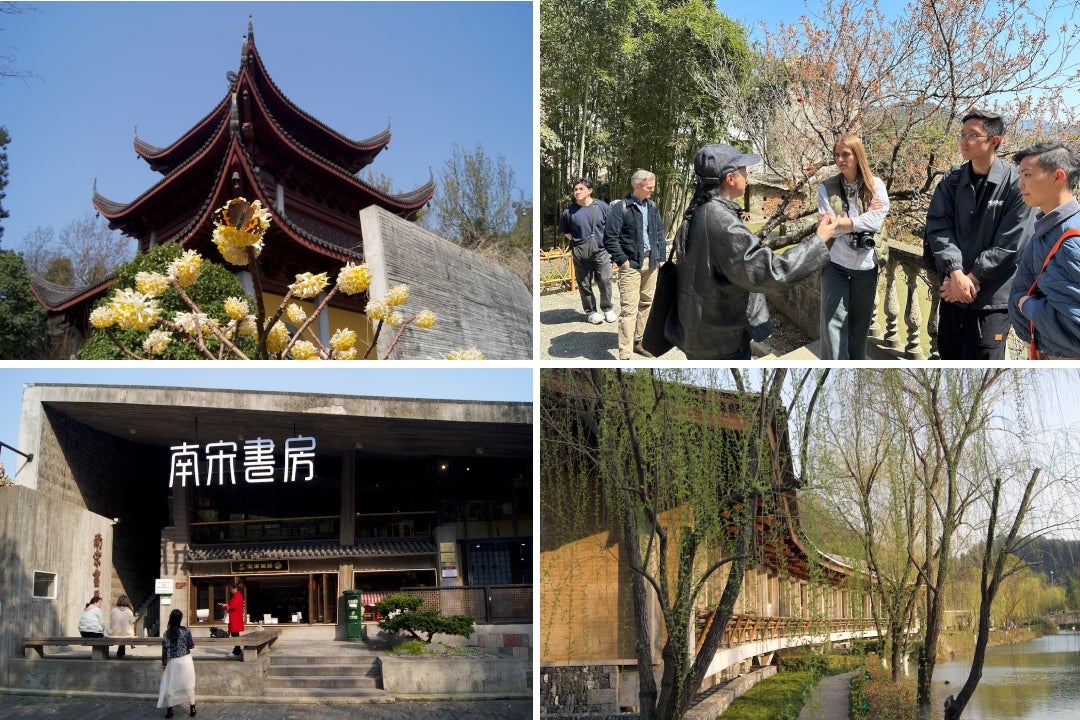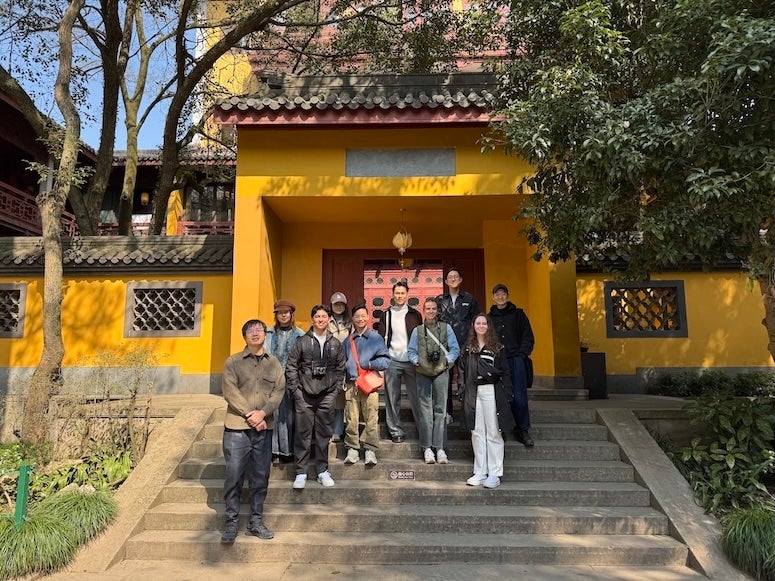When Samantha Garza signed up for her graduate architecture studio this spring, she didn’t expect to find herself walking through a centuries-old Chinese village, observing locals drying vegetables in bamboo trays or washing clothes in the river. Nor did she expect her design philosophy to shift so dramatically.
“This experience was honestly life-altering,” said Garza, a second-year graduate architecture student at Rice University. “It helped me see architecture more as an art form. It wasn’t just about building — it was about understanding people, culture and space.”
This semester, Garza and a group of students from Rice’s School of Architecture had the rare opportunity to work under the guidance of two of the most celebrated architects in the world: Wang Shu and Lu Wenyu, founders of Amateur Architecture Studio and visiting faculty. Shu, a 2012 Pritzker Architecture Prize laureate, and Wenyu, his longtime collaborator, are both recent inductees into the French Academy of Architecture. At Rice, they led a four-month design studio focused on the intersection of tradition and modernity in rural China — culminating in a 10-day immersive trip to study and design for a historic village outside of Hangzhou.

Designing for real people
The course project involved designing a civic workshop for the village of Wencun, where Shu and Wenyu have spent more than a decade revitalizing aging homes and reimagining the possibilities of rural life. Their vision is one where urban and rural spaces can coexist through sensitive design that respects cultural identity while embracing modern needs.
“Usually, architectural education starts zoomed out — from research to site to building,” said Alex Piña, a second-year graduate student. “But in this studio, we started with materials and details. We chose timber or brick on Day 1. That grounded everything we did.”
That inversion of the typical design process was intentional, Wenyu said.
“We want the students to know how to close the building, to understand how things are made,” she said. “Start with construction, and then design.”
The students’ work was grounded not just in technical knowledge but in cultural exchange. As part of the course, Shu introduced the class to Chinese calligraphy, challenging students to select a character that embodied their design ethos. “It’s not just language — it’s structure, pattern, rhythm,” Shu explained. “The brush is elastic. It teaches a new way of feeling space.”
The students’ journey began in the urban city of Shanghai before moving on to Hangzhou and finally Wencun. The contrast between sleek skyscrapers and hand-built stone homes was striking, Piña said.
“In the U.S., we often design at a larger scale,” Piña said. “But there, everything is minimized to what’s necessary. It’s about respect — for the land, the materials and the people.”
While touring the village, students saw firsthand the kind of architecture that can’t be understood through photos alone. They touched the local black limestone, wandered through bamboo groves and learned how villagers build homes themselves, often using salvaged materials.
“I had to relearn how to design,” said Paige Frost, a third-year student in the Master of Architecture program. “It wasn’t about imposing my ideas. It was about adapting. Understanding. Observing how people live.”

Respecting culture through innovation
Shu and Wenyu’s ongoing work in Wencun is structured in three phases: propose a design, renovate then pass the plans to the villagers, who ultimately build the project themselves, often modifying it along the way.
“We don’t want everything controlled by us,” Shu said. “We provide the framework. Then they bring it to life.”
That humility left a strong impression on the students, Garza said.
“When else would I get to learn from a Pritzker Prize winner?” she said. “This was such a unique opportunity. Seeing their projects in person, spending time at their school in Hangzhou — it was all incredibly inspiring.
“It made our designs more real, more grounded. And seeing how locals interacted with public spaces — that shaped everything I did.”
Shu and Wenyu’s pedagogy is rooted in craft — hand drawings, handmade models and deep respect for context. In their words, it’s about finding balance between nature and the artificial.
“They’re very direct in their feedback,” Frost said. “They’ll tell you what works and what doesn’t. But it’s always to push you further.”
The studio will culminate in an exhibition of the students’ designs in Wencun with the goal of inspiring the local community and sparking dialogue.
“We just wanted to let our students design something there,” Wenyu said. “Maybe the locals will take interest. Maybe something will happen.”
The openness to possibility at Rice is what attracted Shu and Wenyu to want to work with its architecture students, Shu said.
“We came to Rice because it’s one of the few good schools that truly teaches students how to do real architecture,” Shu said.

